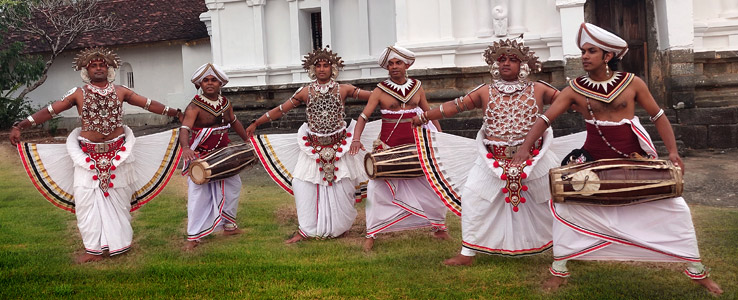
Originating in the Kandy region of the island nation, this traditional dance form holds significant religious, social, and artistic importance. In this article, we delve into the captivating world of Kandyan dancing, exploring its history, significance, and enduring allure.
Kandyan dancing traces its roots back to the ancient kingdoms of Sri Lanka, particularly the Kandyan kingdom, which flourished in the central region of the island. Initially, this dance form was closely associated with religious rituals and ceremonies performed in honor of deities and during auspicious occasions. Over time, it evolved into a refined art form, incorporating elements of storytelling, mythology, and cultural expression.
Costumes and Attire: One of the most striking aspects of Kandyan dancing is its elaborate costumes, which are a visual feast of colors, textures, and intricate designs. Male dancers don the traditional "Ves" costume, consisting of a white cloth wrapped around the waist, a jacket embellished with intricate embroidery, a headdress adorned with peacock feathers, and ankle bells that produce rhythmic sounds with every movement. Female dancers grace the stage in exquisite sarees adorned with metallic embroidery, complemented by ornate jewelry and elaborate hair ornaments.
Music and Instruments: The rhythmic heartbeat of Kandyan dancing is provided by a vibrant ensemble of traditional Sri Lankan instruments. Percussion plays a central role, with drums such as the "Geta Beraya" and the "Thammattama" setting the tempo and providing the driving force behind the performance. Flutes, cymbals, and other instruments add depth and texture to the music, creating a captivating auditory experience that complements the dancers' movements.
Movements and Gestures: Kandyan dancing is characterized by a captivating blend of graceful movements, intricate footwork, and expressive gestures known as "hastha mudras." Dancers exhibit remarkable agility and precision as they perform a repertoire of movements ranging from subtle hand gestures to acrobatic leaps and spins. Each movement is imbued with symbolic meaning, conveying stories from Sri Lankan folklore, mythology, and history.
Significance and Cultural Heritage: Beyond its aesthetic appeal, Kandyan dancing holds deep cultural and religious significance in Sri Lanka. It is often performed during religious festivals, ceremonies, and cultural events, serving as a form of spiritual expression and cultural identity. The preservation and promotion of Kandyan dancing are paramount, with efforts underway to ensure its continued practice and appreciation for future generations.
Conclusion: In the vibrant tapestry of Sri Lankan culture, Kandyan dancing shines as a radiant jewel, weaving together centuries of tradition, artistry, and spirituality. Its captivating performances and rich symbolism continue to mesmerize audiences around the world, celebrating the enduring legacy of this cultural treasure. As guardians of this ancient tradition, Sri Lankans cherish Kandyan dancing as a testament to their cultural heritage and a source of pride for generations to come.